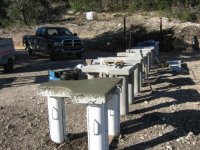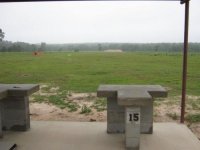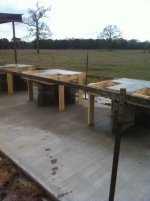Boyd Allen
Active member
A local club that I belong to is going to build a new firing line, and although I have been heavily involved in building some excellent benches in the past, they were a real bear to build, because they were cast in place of one piece, top and base. As you may imagine, the molds were a bit of a task to build, strip, clean, and reassemble. The reason for this approach was that one of the clubs that was involved in the project (of two that paid for the materials, and shared the forms) had approved the design and had a prototype already built, before I became involved, so we were obliged to make more of the same. In any case, I am requesting information and pictures of the best benches you know of, so that we can build the best benches possible. The previous project that I built forms for had limited space on the firing line, but the upcoming project has plenty. The benches that we built do not move, and are about the right height, and shape, although larger would be better, and some other refinements may be called for. In any case, whatever we build, I want it to totally rigid, so that they can be leaned on while shooting, without any movement of the cross hairs on the target. The reason for posting this on the competition forum is that I am primarily interested in the experiences of competition shooters who have shot off of numerous bench designs, although anyone can chime in. I am also looking for things to avoid, so if any designs have issues, I would like to hear about those as well. Thank you for your time.
Boyd
Boyd






